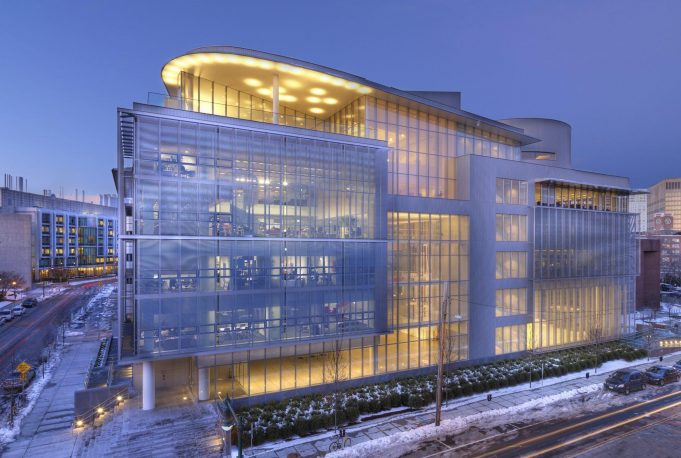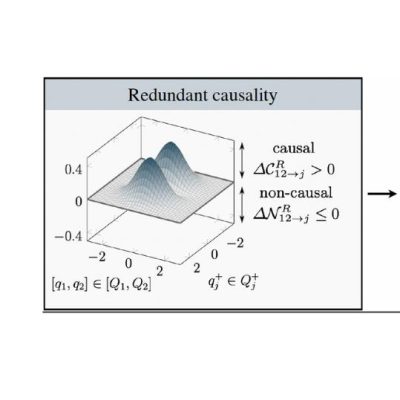
Dava Newman named director of MIT Media Lab
Dava Newman SM ’89, SM ’89, PhD ’92, an MIT professor of aeronautics and astronautics whose groundbreaking work has advanced human performance in space with the goal of interplanetary reach, has been named the new director of the MIT Media Lab, effective July 1, 2021.
“Leading the legendary Media Lab is a dream for me, and I can’t wait to help write the next chapter of this uniquely creative, impactful, compassionate community,” Newman says. Currently she is the Apollo Program Professor of Astronautics in MIT’s Department of Aeronautics and Astronautics, and a faculty member in the Harvard-MIT Program in Health Sciences and Technology.
Newman brings a boldly interdisciplinary perspective to a lab famous for its free-ranging approach to technological innovation. Her work has integrated engineering, design, and biomedical research to better understand and facilitate human adaptation to low-gravity environments. Her career interests also encompass educational innovation and access, climate change, the performing arts, and science and technology policy.
Newman’s unusually broad range of interests combined with disciplinary expertise and talent for invention fit with the Media Lab’s approach of combining diverse perspectives to build more productive, equitable, and satisfying societies.
“I really see the MIT Media Lab as the best place in the world to bring together science, engineering, art, and design, to creatively deal with the huge challenges humanity is facing,” Newman says. “The magic of the Media Lab — which I hope to help build on — is to provide a trusted, open-minded, stimulating space where each person can contribute extraordinary expertise while being stretched beyond their comfort zone to collectively imagine a better, bolder future.”
The selection was announced today in a letter to the School of Architecture and Planning community from Dean Hashim Sarkis.
“In a field of outstanding candidates, Professor Newman stood out for her pioneering research, wide range of multidisciplinary engagements, and exemplary leadership,” Sarkis wrote. “She is a designer, a thinker, a maker, an engineer, an educator, a mentor, a convener, a communicator, a futurist, a humanist and, importantly, an optimist.”
The Media Lab conducted an extensive worldwide search for a new director, ultimately identifying 60 candidates, 13 of whom interviewed with the search committee.
“The irony was not lost on us that the global search culminated in the selection of a member of the MIT community,” says Pattie Maes, professor of Media Arts and Sciences, and chair of the search committee.
“But Dava emerged as an exceptional and exciting candidate whose interest in how science, design, and technology can intersect in truly novel ways aligns well with the core mission of the Lab, as does her infectious optimism, playful, can-do attitude, and fearless approach to big and challenging problems.
“I am especially excited about her personal passion for advancing climate research, education and the arts, which are all areas that the Media Lab hopes to strengthen in the coming years,” add Maes, who also chairs the five-member executive committee that has led the Media Lab since the resignation 15 months ago of former director Joi Ito.
Newman has served as principal investigator on four space missions, developing new experiments and techniques for measuring the dynamics of astronaut activity on the Space Shuttle, the Mir space station, and the International Space Station. She has developed four advanced suit concepts for intravehicular and extravehicular activity in space and has broken new ground in studying the control of astronaut motion.
Among her innovations, Newman is well-known for developing the BioSuit, a 2007 TIME Best Invention, which is a supple, “second-skin” space suit that would allow astronauts greater flexibility while providing the pressure needed to function well in a low-gravity environment. First designed — and still intended — for future Moon and Mars exploration, Newman’s BioSuit research has generated another potential application, as an assistive device for people with long-term medical challenges.
Beyond its technical applications, the aesthetically striking BioSuit design has also been exhibited at the Venice Biennale, the American Museum of Natural History, London’s Victoria and Albert Museum, Chicago’s Museum of Science and Industry, and the Metropolitan Museum of Art.
In addition to her distinctive intellectual interests, Newman brings a significant leadership portfolio to the director’s position. Nominated by President Obama, she served as deputy administrator of NASA from 2015 to 2017, the first female engineer in this high-ranking role, and helped to develop the Human Journey to Mars plan. Newman also directed MIT’s Technology and Policy Program from 2003 to 2015 and has served as director of the MIT Portugal program from 2011 to 2015, and from 2017 until the present. A longtime advocate for STEM education and for women in science and engineering, Newman also co-chairs a National Academies committee on biological and physical sciences, and serves on a number of for-profit and nonprofit boards.
Newman received her bachelor’s degree in aerospace engineering from the University of Notre Dame in 1986, a master’s in aerospace engineering from MIT in 1989, a master’s in technology and policy from MIT in 1989, and a PhD in aerospace biomedical engineering from MIT in 1992; she was also elected to the MIT Corporation as the alumni member that year. After a year on the faculty at the University of Houston, she joined the MIT faculty in 1993, and has been a member of the faculty ever since.
Among honors from the American Institute of Aeronautics and Astronautics (AIAA), the Explorer’s Club, and numerous other organizations, Newman has been awarded the NASA Distinguished Service Medal and is an AIAA Fellow. In 2000, she was named a Margaret MacVicar Faculty fellow, a 10-year MIT chair granted for excellence in undergraduate teaching and innovation in education. Newman was also head of house from 2005 to 2015 at Baker House, an undergraduate residence hall.
Of Newman’s time at NASA, she says it “was an incredible honor to serve and lead, with a portfolio across exploration, science, technology, and innovation. It was also an extraordinary opportunity to work closely with the White House, Congress, various governmental agencies, and international partners, all of which provided invaluable lessons in how to balance the nurturing of individual talents and personalities with the development of collective vision and mission to achieve great things on a national and global scale.” Newman also stressed the importance of diversity among innovators: “It’s absolutely a highest priority for academia, government, industry, and the arts to make a dramatic sea change. I think of diversity, inclusion, innovation, and expression working together to reach our goals of dynamic equity and radical reinvention.”
Since its founding in 1985, the Media Lab has promoted an interdisciplinary culture to create technologies and experiences that enable people to understand and transform their lives, communities, and environments. It blends a broad research agenda and a graduate degree program in media arts and sciences. The lab has 22 research groups ranging across robotics, smart prostheses, cognitive enhancement, innovative learning, music, and more. Lab researchers have developed Scratch, a programming language used by around 50 million kids worldwide, as well as influential technology that exposed racial biases in facial recognition systems, and have pioneered research fields such as wearable computing, tangible interfaces, and affective computing. Currently the Media Lab community includes some 400 faculty, researchers, students, and staff.
Globally, the Media Lab’s reach has been extended through more than 100 companies founded by Media Lab faculty, alumni, and research staff. There are also more than 100 Media Lab graduates who have gone on to faculty positions at top institutions worldwide.
“I plan to start by doing a lot of listening and learning,” Newman says. “I like to meet people where they are, and to encourage them to put all their great ideas on the table. I think that’s the best way to go forward, working with the whole community — faculty, students and staff — to tap into everyone’s creativity. I can’t wait to get started. There is so much exciting, important work to do … together.”

